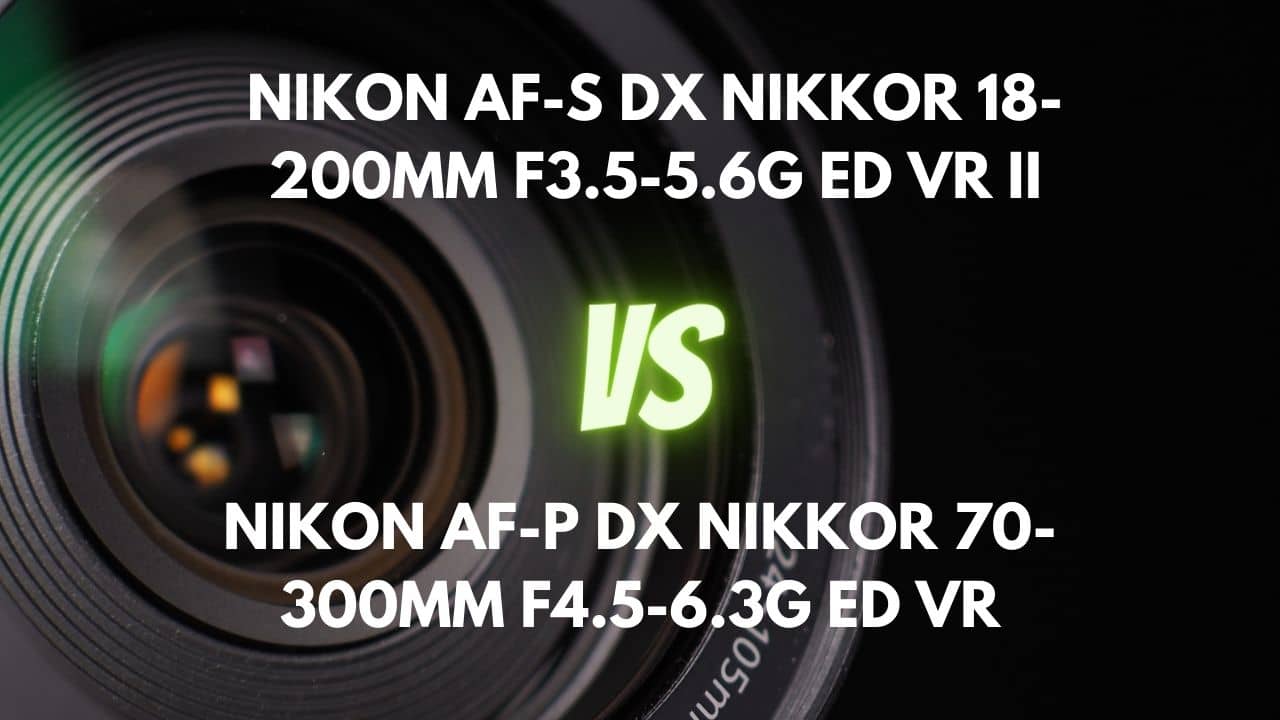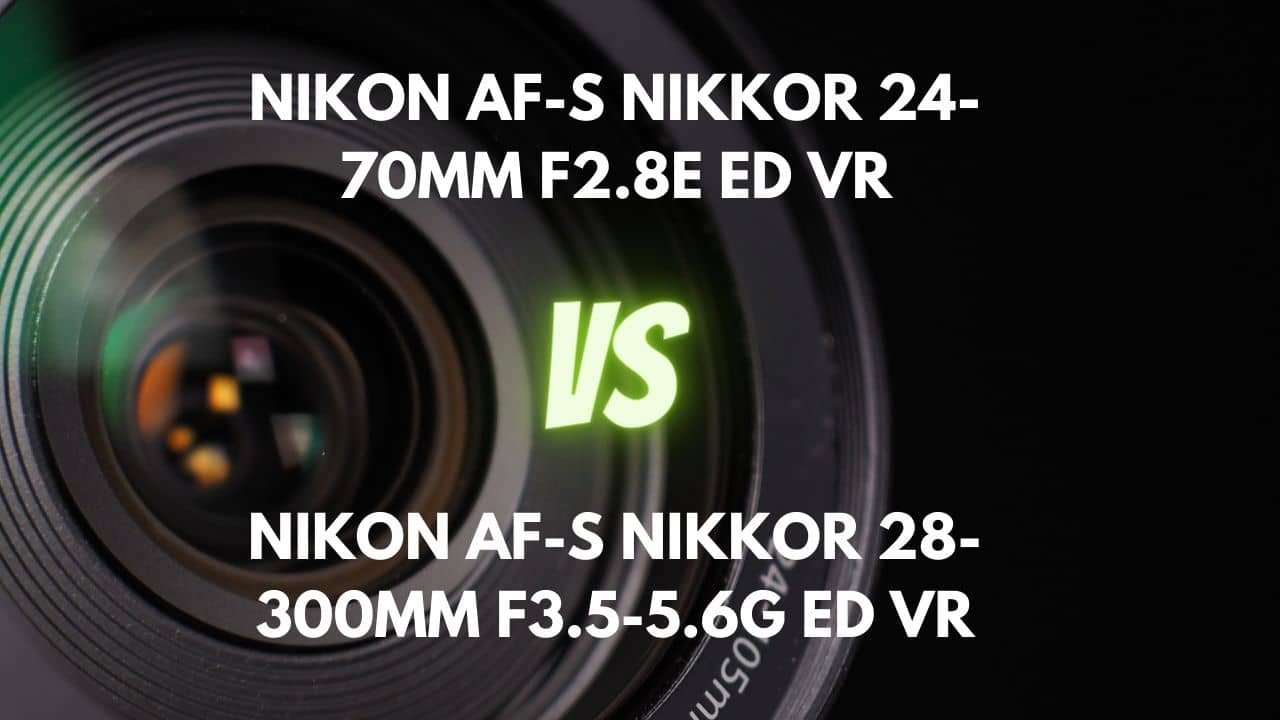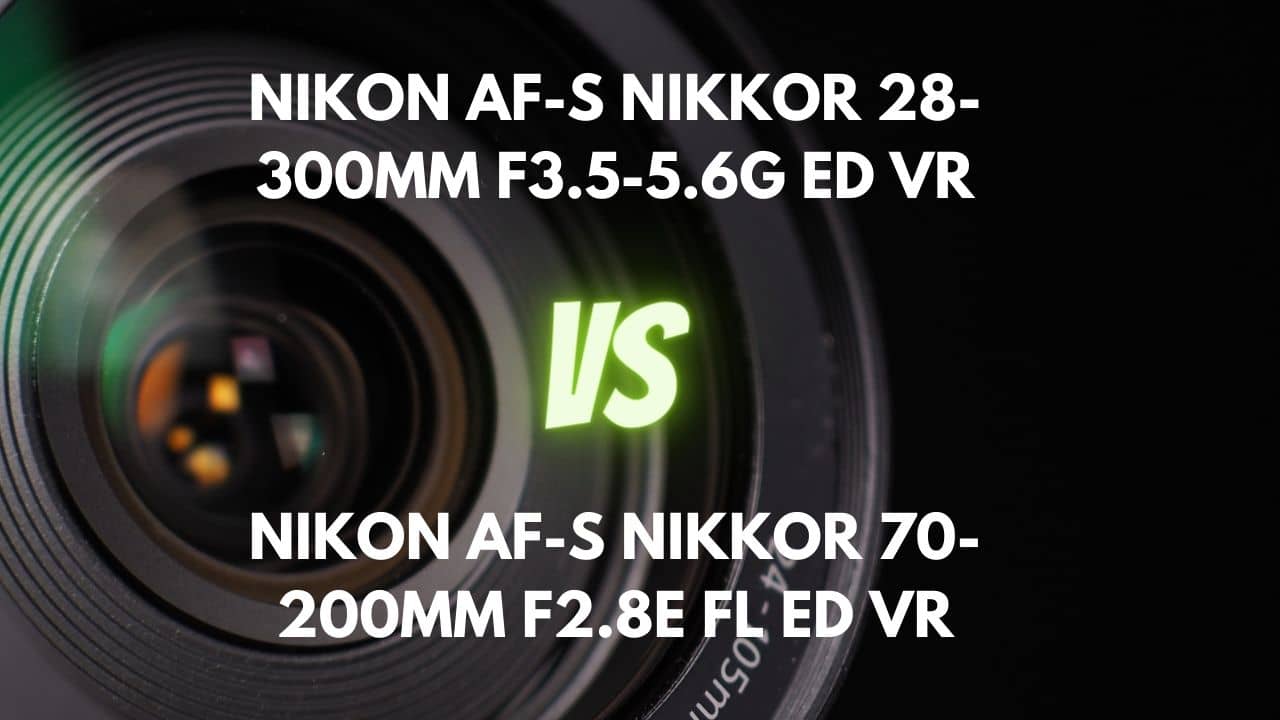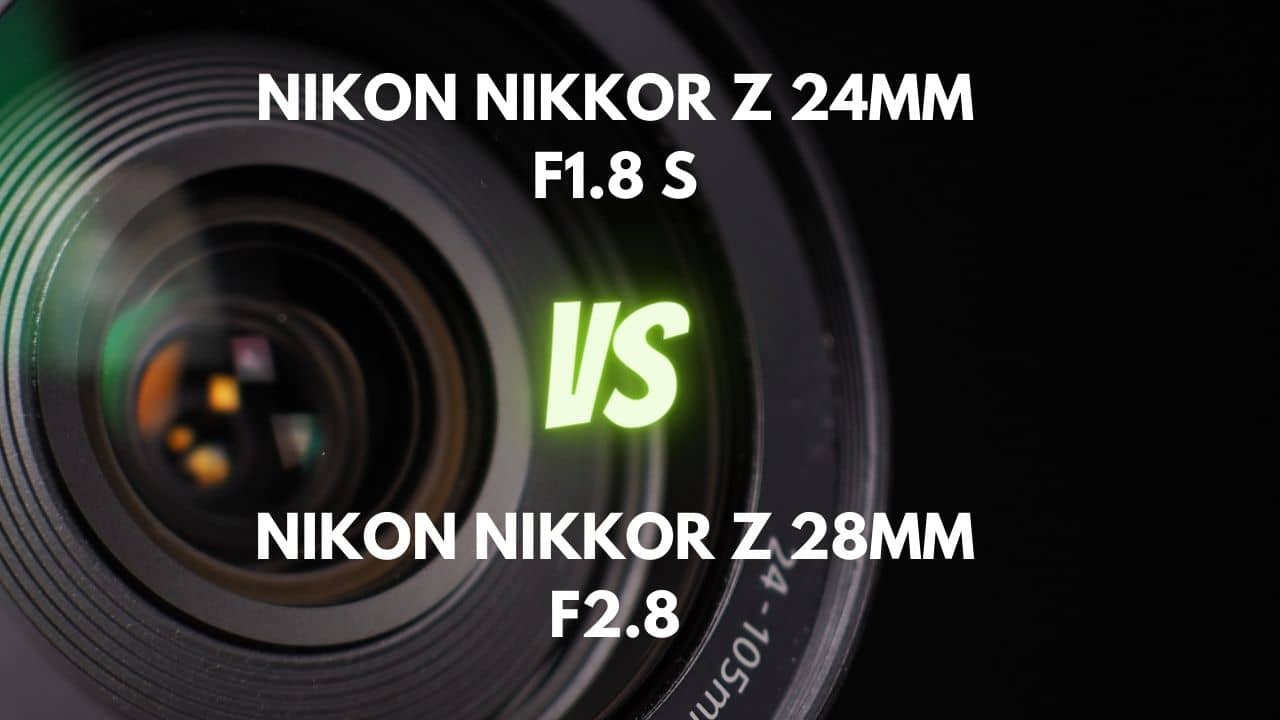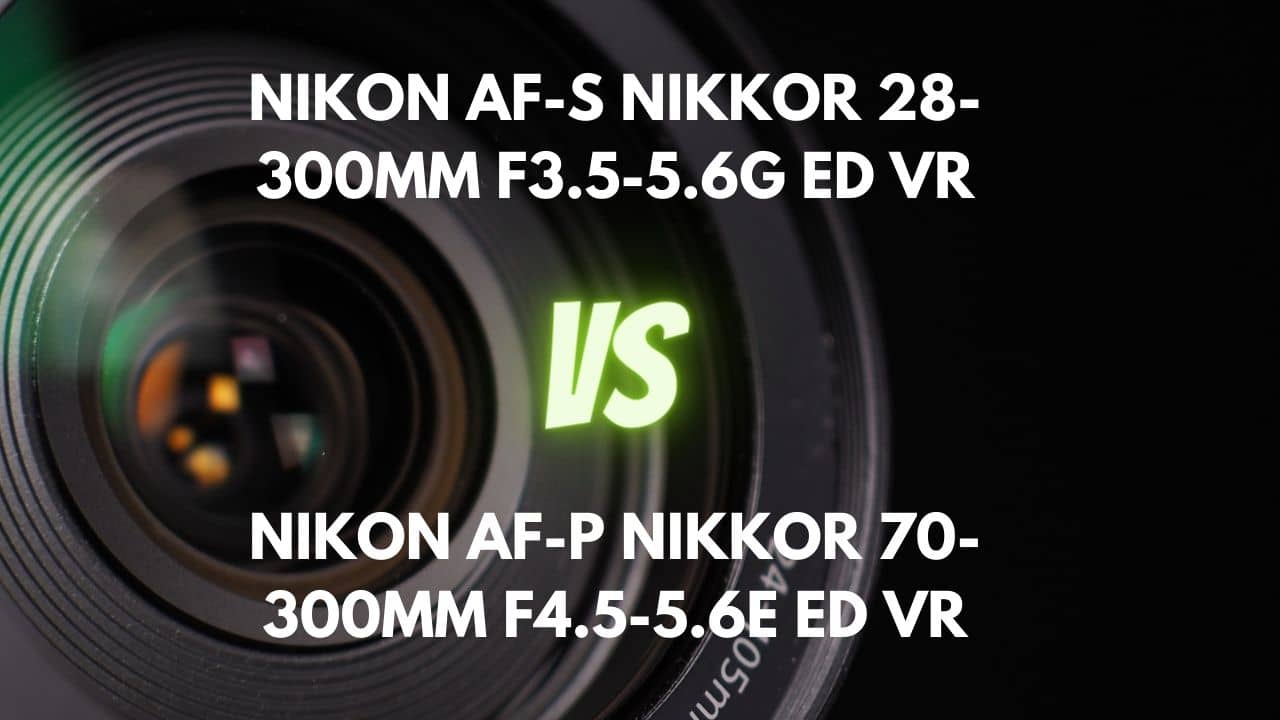Are you on the hunt for the perfect lens to elevate your photography game? Look no further!
In this article, we’ll dive deep into a comprehensive comparison between the versatile Nikon DX 18-200mm f/3.5-5.6 and the powerful Nikon DX 70-300mm f/4.5-6.3.
Whether you’re a travel enthusiast capturing breathtaking landscapes, a portrait photographer seeking that perfect bokeh, or an adrenaline junkie chasing the perfect action shot, we’ve got you covered.
We understand that finding the right lens can be a daunting task, but fret not, our detailed analysis will help you make an informed decision based on your unique photography needs. From focal lengths to aperture size, sharpness to distortion control, we’ll break down every aspect of these two lenses, allowing you to easily weigh the pros and cons.
By exploring this in-depth comparison, you’ll not only learn which lens best suits your photography style but also unlock the full potential of your camera, helping you create stunning, professional-quality images.
So buckle up and get ready to embark on a journey to discover the perfect lens match for your creative vision!
Overview
| Nikon AF-S DX NIKKOR 18-200mm F3.5-5.6G ED VR II | Nikon AF-P DX NIKKOR 70-300mm F4.5-6.3G ED VR | |
|---|---|---|
| Max Aperture | F3.5-5.6 | F4.5-6.3 |
| Aperture Type | Variable | Variable |
| Focal Range (mm) | 18-200 | 70-300 |
| Max Format | APS-C / DX | APS-C / DX |
| Zoom Ratio (X) | 11.1 | 4.3 |
The Nikon DX 18-200mm f/3.5-5.6, with a focal range of 18-200mm and a variable aperture of f/3.5-5.6, offers a wider focal range and a slightly larger aperture when compared to the 70-300mm lens. This makes the 18-200mm lens more versatile and suitable for various photography genres, such as travel, landscape, and portrait photography. Its wider aperture provides better low light performance.
On the other hand, the Nikon DX 70-300mm f/4.5-6.3 has a focal range of 70-300mm and a variable aperture of f/4.5-6.3. This lens is particularly useful for telephoto photography, such as sports and wildlife photography, where a longer focal length is needed to capture subjects from a distance. The 70-300mm lens provides a shallower depth of field due to its longer focal length. However, its smaller aperture might result in poorer low light performance compared to the 18-200mm lens.
Design and Ease of Use
| Nikon AF-S DX NIKKOR 18-200mm F3.5-5.6G ED VR II | Nikon AF-P DX NIKKOR 70-300mm F4.5-6.3G ED VR | |
|---|---|---|
| Diameter x Length (mm) | ⌀77×96.5mm | ⌀72×125mm |
| Weight (gr) | 565 | 415 |
| Filter Thread (mm) | 72 | 58 |
| Weather Sealing | No | No |
| Zoom Method | Rotary (extending) | Rotary (extending) |
| Distance Scale | Yes | No |
| DoF Scale | No | No |
| Hood Supplied | Yes | No |
| Hood Code | HB-35 | HB-77 |
The Nikon DX 18-200mm f/3.5-5.6 has a diameter of ⌀77mm and a length of 96.5mm, making it relatively compact and shorter than the 70-300mm lens. However, it weighs 565 grams, which is heavier than the 70-300mm lens. Both lenses use a rotary (extending) zoom method. The 18-200mm lens, due to its compact size, might be more suitable for situations where discreetness and portability are important, such as street photography or travel photography.
On the other hand, the Nikon DX 70-300mm f/4.5-6.3 has a diameter of ⌀72mm and a length of 125mm, making it longer but slightly slimmer than the 18-200mm lens. It weighs 415 grams, which is lighter than the 18-200mm lens. The lighter weight of the 70-300mm lens might make it more comfortable to handle during longer shoots, and the slimmer design might make it easier to store in a camera bag.
Lens Mount and Barrel
The Nikon DX 18-200mm f/3.5-5.6 features a metal lens mount with a rubber ring, offering some environmental sealing against dust and moisture. The lens barrel is also made of metal, providing a sturdy and durable construction.
However, this lens is susceptible to zoom creep between 28 and 135mm focal lengths when pointed vertically up or down. The newer version of the lens addresses this issue with a lock switch to secure the barrel in the wide position for transportation.
On the other hand, the Nikon DX 70-300mm f/4.5-6.3 has a plastic lens mount with a precise fit, but lacks a rubber gasket for environmental sealing. The lens barrel is made of polycarbonate, making it lighter and more portable, but potentially less durable than the metal counterpart. This lens extends an additional 3 inches when set to the 300mm position.
In conclusion, both lenses have their advantages and drawbacks. If you prioritize durability, a more professional feel, and environmental sealing, the 18-200mm lens with its metal lens mount and barrel might be the superior choice.
However, if you value a lighter and more portable lens, the 70-300mm lens with its plastic lens mount and polycarbonate barrel could be a better option. Ultimately, the choice depends on your specific needs and preferences as a photographer.
Weather Sealing
The Nikon DX 18-200mm f/3.5-5.6 offers a degree of environmental protection with a rubber ring on the metal mount, but it is not entirely waterproof. It lacks internal seals at the rings, switches, and front of the barrel, which could leave the lens vulnerable to dust and moisture in adverse conditions.
In contrast, the Nikon DX 70-300mm f/4.5-6.3 does not provide any weather sealing or gasket at the lens mount, making it less resistant to dust and moisture. Like the 18-200mm lens, it also lacks internal seals at the rings, switches, and front of the barrel, and there is no fluorine coating on the front element for added protection.
Considering the additional knowledge on weather sealing, the 18-200mm lens is superior in terms of environmental protection compared to the 70-300mm lens due to the presence of the rubber ring on the metal mount.
However, neither lens is fully weather-sealed, so both may require extra care when used in harsh or unpredictable conditions. If you frequently shoot in adverse weather or need extra protection for your equipment, a fully weather-sealed lens might be a better choice.
Rings
The Nikon DX 18-200mm f/3.5-5.6 boasts two well-placed rings for user convenience: a zoom ring and a manual focus ring. The zoom ring is ideally positioned for operation by the thumb and forefinger, smoothly moving through its range.
The manual focus ring features a ridged rubber grip and is easily operable by the middle finger. Both rings are smooth and ergonomically designed. However, the zoom lock switch, located between the rings, can be inconvenient as it requires unlocking before use. A recessed distance scale offers settings for various distances.
On the other hand, the Nikon DX 70-300mm f/4.5-6.3 features a thin focus ring at the front of the outer barrel and a large zoom ring dominating the lens body. The zoom ring is clearly marked and extends as you zoom, with no creep or drift. It is slightly rough but appropriately damped.
The focus ring, made of ridged plastic, has a narrow rotation and is not mechanically coupled. The fly-by-wire system affects the manual focus experience but offers smooth rotation. There is no windowed distance scale or depth-of-field indicator, but the lens does provide a constant manual override option for focus.
Comparing the two lenses, the 18-200mm lens offers a better ring design due to its ergonomic placement, smooth movement, and the presence of a distance scale. The 70-300mm lens, while featuring a constant manual override option, suffers from a less satisfying manual focus experience due to the fly-by-wire system. In conclusion, the 18-200mm lens is superior in terms of ring design and overall usability.
Switches/Buttons
The Nikon DX 18-200mm f/3.5-5.6 is equipped with three slider switches on the side of the lens barrel, located behind the focusing ring. These switches offer M/A and M focusing modes, VR on and off, and Normal and Active VR settings, providing users with a variety of options. The switches and buttons are thoughtfully designed and easy to use, ensuring a seamless experience for photographers.
In contrast, the Nikon DX 70-300mm f/4.5-6.3 lacks mechanical switches for AF/MF or VR. However, it does offer a constant manual override option for focus. The absence of an AF/MF switch is not a significant issue since the camera body determines the focus mode. There are no other switches or buttons on this lens, making for a more minimalist design.
When comparing the two lenses, the 18-200mm lens stands out as superior in terms of switches and buttons, as it provides more control options for users. The 70-300mm lens may appeal to photographers who prefer a simpler, more minimalist design, but it offers less functionality in terms of switches and buttons. Overall, the 18-200mm lens takes the lead in offering a more comprehensive and user-friendly experience.
Filter Thread
The Nikon DX 18-200mm f/3.5-5.6 features a 72mm filter thread size, which is made of metal. The front element and filter thread do not rotate during focusing, ensuring convenience when using angle-critical attachments and filters like polarizers and graduated filters. This design allows for easy use of filters without requiring readjustment.
On the other hand, the Nikon DX 70-300mm f/4.5-6.3 has a smaller 58mm front filter thread size, which is made of high-quality plastics. Like the 18-200mm lens, the filter thread does not rotate when focusing, making it easy to use with filters.
When comparing the two lenses, the 18-200mm lens has a larger filter thread size, which may offer a wider range of filters and greater compatibility with existing gear. Additionally, its metal construction provides greater durability than the plastic filter thread of the 70-300mm lens.
However, the 70-300mm lens may appeal to photographers who prefer a lighter lens, as its smaller filter thread size and plastic construction contribute to a lighter overall weight.
Lens Hood
The Nikon DX 18-200mm f/3.5-5.6 includes a lens hood in its package, which also contains a snap-on front lens cap, rear lens cap, bayonet hood, and a flexible lens pouch. The hood features a bayonet mount and is made of plastic with a matte finish.
Its ergonomic bevel ensures smooth attachment and removal, while the hood can be smoothly rotated to adjust its angle. This lens hood provides effective protection against unwanted light and potential damage to the front element.
On the other hand, the Nikon DX 70-300mm f/4.5-6.3 does not include a lens hood in its package, requiring a separate purchase. The designated HB-77 hood has a bayonet fitting that surrounds the 58mm front filter thread. Although not included, this lens hood still offers protection against flare and potential damage once obtained and attached.
Comparing the two lens hoods, the 18-200mm lens has an advantage in that it comes with the lens package, saving the photographer from additional expenses and ensuring immediate protection for the front lens element. However, both lens hoods provide essential protection against flare and potential damage when attached.
Focusing and Optical Stabilization
| Nikon AF-S DX NIKKOR 18-200mm F3.5-5.6G ED VR II | Nikon AF-P DX NIKKOR 70-300mm F4.5-6.3G ED VR | |
|---|---|---|
| Autofocus | Yes | Yes |
| AF Motor | Silent Wave Motor | Stepping motor |
| Rotating Front Element | Does not rotate on focusing | Does not rotate on focusing |
| Min Focus Distance | 0.5m | 1.1m |
| Max Magnification (X) | 0.22 | 0.22 |
| Full-Time Manual Focus | Yes | Yes |
| Focus Method | Internal | Internal |
Focusing Performance
The Nikon DX 18-200mm f/3.5-5.6 boasts a Silent Wave Motor for autofocusing, which is almost silent and efficient. Its focusing speed is generally adequate, taking approximately 1.2 seconds to go from infinity to 50cm and back again. Autofocus performance is reliable and accurate in well-lit situations, while low-light performance is slightly slower but still satisfactory. The lens also features a full-time manual focus override that is smooth and precise.
Its internally focusing design ensures that the lens length remains constant, and the front element does not rotate during focusing, making it convenient for angle-critical attachments.
In contrast, the Nikon DX 70-300mm f/4.5-6.3 offers a silent and reliable autofocus system with instant manual focus override. Autofocus accuracy remains consistent even at the longest focal length, producing sharp images in low-light conditions. Initial autofocus acquisition is notably fast, and manual focus action is smooth.
Like the 18-200mm lens, the 70-300mm lens also has an internally focusing design, maintaining a constant length throughout focus and zoom settings.
Comparing the two lenses, the 70-300mm lens has a slight edge in focusing performance, particularly in terms of autofocus speed and accuracy in low-light conditions. However, the 18-200mm lens still delivers solid autofocus performance, making it a viable option for various shooting scenarios.
Optical Stabilization
The Nikon DX 18-200mm f/3.5-5.6 boasts Nikon’s second-generation VR II vibration reduction system, which allows handholding at shutter speeds 3.5 stops lower than usual. The near-silent mechanism produces a minimal whirring noise, and the lens offers two VR modes: Normal and Active.
The VR system delivers an 80% chance of achieving usable results at various focal lengths and shutter speeds, with an increased likelihood of capturing sharp images if you’re willing to take multiple shots.
On the other hand, the Nikon DX 70-300mm f/4.5-6.3 is equipped with Nikon’s Vibration Reduction (VR) technology, offering up to 4 stops of correction. This ensures consistently crisp results at 300mm, even at shutter speeds as long as 1/15-second.
The VR system enhances low-light capabilities, allowing for slower shutter speeds in dim lighting. The VR feature is controlled through the camera menu, and there is only one version of the lens with VR.
Comparing the two lenses, the 70-300mm lens offers a slightly better optical stabilization system, with up to 4 stops of correction compared to the 18-200mm lens’s 3.5 stops. However, the 18-200mm lens provides more flexibility with its two VR modes.
Image Quality
| Nikon AF-S DX NIKKOR 18-200mm F3.5-5.6G ED VR II | Nikon AF-P DX NIKKOR 70-300mm F4.5-6.3G ED VR | |
|---|---|---|
| Special Elements | 2x ED glass elements and 3x aspherical lens elements | 1 ED |
| Diaphragm Blades | 7 | 7 |
| Circular Aperture | Yes | Yes |
Aberration
The Nikon DX 18-200mm f/3.5-5.6 exhibits some chromatic aberration, with red-green fringing detectable at the widest focal lengths. However, this diminishes at longer focal lengths and is easily correctable. Spherical aberration is also present, leading to a degree of focus shifting when apertures are stopped down, likely due to the extended zoom design.
In contrast, the Nikon DX 70-300mm f/4.5-6.3 demonstrates good chromatic aberration control, particularly at the center of the frame. The incorporation of ED glass elements further enhances this performance. Lateral chromatic aberration is only slightly visible in the corners at shorter focal lengths, but becomes more noticeable between 200mm and 300mm across the frame.
Nevertheless, it is easily corrected in post-processing. The lens also exhibits good coma and spherical aberration control, with impressive sharpness at various apertures, peaking between f/8 and f/11, even at 300mm.
When comparing the two lenses, the 70-300mm lens outperforms the 18-200mm lens in terms of aberration control. The superior chromatic, coma, and spherical aberration control of the 70-300mm lens ensures sharper images with less visible distortion.
Sharpness
The Nikon DX 18-200mm f/3.5-5.6 showcases impressive sharpness for an F-mount superzoom, particularly at short to mid zoom settings. Center sharpness remains excellent throughout the focal range, while corner sharpness may be slightly weaker at wider apertures but improves when stopped down.
The sharpest apertures typically range from f/8 to f/11. At longer focal lengths, such as 135mm at f/5.6, image quality can be affected, but stopping down to f/11 can yield better results. While this lens is capable of delivering sharp images, it may not be as sharp as some prime lenses or more specialized zoom lenses. Overall, it offers a versatile and convenient zoom range with a good balance of sharpness and image quality.
On the other hand, the Nikon DX 70-300mm f/4.5-6.3 delivers impressive sharpness across various focal lengths and apertures. Center sharpness is generally excellent, peaking between f/8 and f/11. Corner sharpness is very good and improves as the aperture is stopped down, with the sharpest results typically found between f/11 and f/16.
Wide-open apertures yield good sharpness, which is further enhanced by stopping down. The sharpest apertures are generally within the f/8 to f/16 range, depending on the focal length. Sharpness performance is maintained even when paired with teleconverters, making this lens a solid choice for a range of photography needs.
Comparing the two lenses, the 70-300mm lens is superior in terms of sharpness. Its consistent performance across various focal lengths and apertures, as well as its ability to maintain sharpness when used with teleconverters, make it a more versatile and reliable choice for photographers seeking excellent sharpness in their images.
Bokeh Quality
The Nikon DX 18-200mm f/3.5-5.6 can deliver smoothly blurred out-of-focus regions, particularly at 200mm f/5.6, but the bokeh is not entirely smooth. Hard-edged specular highlights can give a harsh appearance to defocused areas.
However, with careful selection of the background and some thought, it is possible to achieve appealing results. Despite this, some users have reported distracting and nervous bokeh that required additional post-processing to smooth out.
In contrast, the Nikon DX 70-300mm f/4.5-6.3 produces bokeh that is generally considered to be smooth and attractive, thanks to its 7 rounded diaphragm blade design. While the quality of bokeh is subjective, many users find it pleasing and better than what is offered by similar lenses such as the Nikkor 55-300mm. However, it may not be as smooth as that produced by wide aperture lenses.
Comparing the two lenses, the 70-300mm lens offers superior bokeh quality. Its smooth and attractive bokeh, resulting from the 7 rounded diaphragm blade design, provides a more pleasing background blur compared to the 18-200mm lens. The improved bokeh quality of the 70-300mm lens can enhance the overall aesthetic of your images, especially in situations where subject-background separation is desired.
Flare/Ghosting
The Nikon DX 18-200mm f/3.5-5.6 exhibits minimal flare and ghosting, as long as it is not pointed directly into the sun. When forced to flare, it produces starbursts, rainbow effects, and circular patterns of various colors.
However, contrast is not significantly affected. The lens handles flare relatively well, especially compared to some other lenses in its class, and its complex optical construction allows for intricate flare patterns at small apertures.
On the other hand, the Nikon DX 70-300mm f/4.5-6.3 has very good flare control, even without the optional hood. There is no significant loss of micro-contrast even when shooting directly into the sun, and ghosting is not a major issue.
However, if you see too much flare while using a filter, it is recommended to remove the filter to see if the effect goes away, as a low-quality filter can be the cause of flare. Overall, the lens has impressive resistance to flare and ghosting, making it suitable for shooting in bright or backlit conditions.
In conclusion, the 70-300mm lens offers superior performance in terms of flare and ghosting control compared to the 18-200mm lens. Its impressive resistance to flare and ghosting, even without the optional hood, ensures that your images maintain clarity and contrast, even in challenging lighting conditions.
Vignetting
The Nikon DX 18-200mm f/3.5-5.6 demonstrates occasional vignetting, particularly visible at wider focal lengths. Despite this, it surpasses its competitors in terms of optical performance, especially in relation to vignetting correction.
This suggests a commendable starting point for post-processing, meaning that the vignetting can be effectively reduced via software or in-camera correction. However, it’s worth noting that ideally, we’d want the lens to produce good results without any digital manipulation.
In contrast, the Nikon DX 70-300mm f/4.5-6.3 also exhibits some visible vignetting. This is primarily noticeable at wider focal lengths and larger apertures. However, given that it’s a low-cost telephoto lens, the level of vignetting isn’t overly concerning and can be effectively corrected during post-processing.
The vignetting phenomenon disappears entirely when shooting at narrower apertures, such as f/8 or higher, providing a clear, evenly lit image.
In conclusion, the 70-300mm lens proves superior in terms of vignetting, especially considering its ability to eliminate vignetting at narrower apertures. Although the 18-200mm lens offers better vignetting correction compared to its competitors, the 70-300mm lens’s performance at narrower apertures secures its position as the superior choice in terms of vignetting.
Distortion
The Nikon DX 18-200mm f/3.5-5.6 displays noticeable distortion, especially at the wide-angle end, where barrel distortion is prominent. This may lead to a “mustache” or wavy distortion pattern that could be difficult to correct using basic software tools.
As you move from 35mm to 70mm, pincushion distortion becomes more apparent but is less complex and can be more easily corrected with software. It’s worth mentioning that distortion is primarily an issue in photos featuring straight lines and may not significantly affect subjects such as landscapes, portraits, or wildlife.
On the other hand, the Nikon DX 70-300mm f/4.5-6.3 exhibits modest distortion for a zoom lens. At 70mm, it has -0.674% barrel distortion, while pincushion distortion readings are +1.36% at 135mm, +1.43% at 200mm, and +1.15% at 300mm.
Distortion is well-controlled at shorter focal lengths and isn’t particularly visible in real-world subjects at any focal length. Straight lines might display a slight inward curve due to pincushion distortion, but this can be corrected using software. Overall, this lens has some distortion, but it is well-managed and can be corrected if necessary.
In conclusion, the 70-300mm lens outperforms the 18-200mm lens in terms of distortion control. While the 18-200mm lens exhibits noticeable distortion that may require more complex correction, the 70-300mm lens demonstrates better distortion management, making it easier to correct any imperfections in post-processing.
Final Verdict
In summary, both the Nikon DX 18-200mm f/3.5-5.6 and Nikon DX 70-300mm f/4.5-6.3 offer unique benefits suited to different photography genres and preferences.
The 18-200mm lens, with its wider focal range and larger aperture, is more versatile and suitable for travel, landscape, and portrait photography. It also has better environmental protection and a more compact design. However, it falls short in certain aspects such as aberration control, sharpness, bokeh quality, flare/ghosting control, vignetting, and distortion control.
On the other hand, the 70-300mm lens excels in telephoto photography, such as sports and wildlife, due to its longer focal length. It is lighter and more portable, has better autofocus performance, and superior optical stabilization. Furthermore, it outperforms the 18-200mm lens in terms of aberration control, sharpness, bokeh quality, flare/ghosting control, vignetting, and distortion control.
Ultimately, the choice between the two lenses depends on your specific needs and preferences as a photographer. If you require a versatile lens with a wider focal range and better environmental protection, the 18-200mm lens may be the better choice. However, if you prioritize telephoto capabilities, a lighter and more portable lens, and overall superior optical performance, the 70-300mm lens would be the better option.

